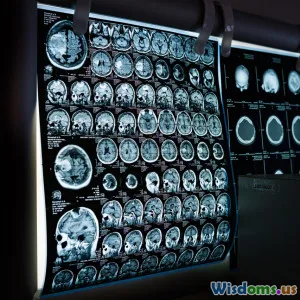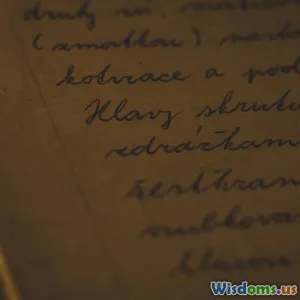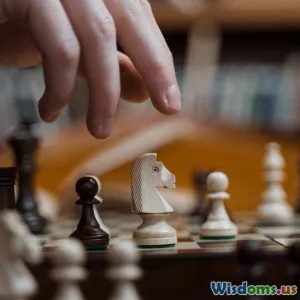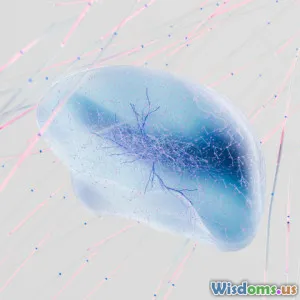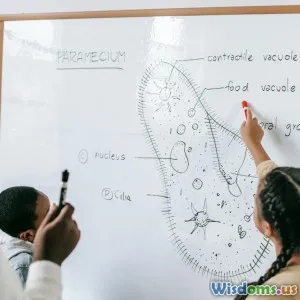
Inside the Brain When We Make Snap Decisions Versus Thoughtful Choices
7 min read Explore how the brain operates during snap decisions versus thoughtful choices, revealing the neural processes that shape our daily actions. (0 Reviews)
Inside the Brain When We Make Snap Decisions Versus Thoughtful Choices
Introduction: The Mystery Behind Our Choices
Every day, we are faced with countless decisions—from what coffee to order in the morning to complex career moves that shape our future. Yet, some choices happen in a flash, almost instinctively, while others require deep reflection and careful weighing of options. What happens inside our brains during these processes? Why can some decisions feel immediate and automatic whereas others involve considerable thought? This article dives into the neuroscience behind snap decisions and thoughtful choices, illuminating the distinct brain mechanisms at play.
The Dual-Process Theory: A Framework for Understanding Decision-Making
Psychologists often refer to the Dual-Process Theory to explain how humans make decisions. It divides cognitive processing into two systems:
- System 1: Fast, automatic, intuitive, and often unconscious.
- System 2: Slower, deliberate, analytical, and conscious.
Applying this to our daily decisions, snap decisions mostly engage System 1, while thoughtful choices engage System 2. Neuroscience confirms this division, showing specific brain regions correspond to these cognitive systems.
Snap Decisions: The Brain’s Rapid Response Team
When the brain makes a rapid decision, it prioritizes speed over accuracy, often leveraging learned patterns, heuristics, and emotional cues. Key brain areas involved include:
-
Amygdala: Associated with emotional processing, this region acts as an alert system, rapidly assessing threats or rewards. For instance, when you see a car dart suddenly into your path, the amygdala assesses danger instantly, triggering a quick decision to brake.
-
Basal Ganglia: This area plays a vital role in habit formation and procedural decisions. If you’ve picked coffee from the same café every day, your basal ganglia facilitates that automatic choice without engaging much thought.
-
Anterior Cingulate Cortex (ACC): Involved in conflict monitoring, the ACC helps detect when rapid decisions might be risky or need adjustment.
These structures collaborate to enable split-second choices. For example, firefighters entering a burning building rely heavily on such rapid decision-making to navigate safely.
Real-World Insight: Research from the University of California showed that chess experts rely on snap recognition of board patterns using System 1 to make quick moves, highlighting brain efficiency in rapid strategic decisions.
Thoughtful Choices: Engaging Higher-Order Cognition
When decisions require weighing options, considering outcomes, or resolving uncertainty, the brain slows down and engages different regions:
-
Prefrontal Cortex (PFC): The decision-making powerhouse responsible for planning, reasoning, and impulse control. The lateral PFC evaluates alternatives and potential consequences.
-
Orbitofrontal Cortex (OFC): Processes reward value and risks linked to different options.
-
Hippocampus: Involved in recalling memories relevant to past experiences that inform current decisions.
This network supports complex choices like buying a home, choosing a life partner, or strategizing business moves.
Example: A 2015 study in Nature Neuroscience found that when participants had to choose between monetary rewards with varying delays, the PFC activity predicted their preference toward patient, thoughtful choices rather than immediate gratification.
The Role of Emotions in Decision Type
Contrary to the assumption that emotions always interfere with logic, neuroscientist Antonio Damasio highlighted in his somatic marker hypothesis that emotions are integral to decision-making. Emotional signals guide both rapid and deliberate choices but operate differently across brain areas.
- During snap decisions, the amygdala’s quick emotional evaluation can dominate.
- For thoughtful choices, the PFC integrates emotional information with logic, enabling balanced outcomes.
Data Point: Individuals with damage to the PFC struggle with thoughtful decision-making, oftentimes making impulsive choices disregarding long-term consequences.
How Experience Shapes Snap Decisions and Thoughtfulness
Experience fine-tunes our brain’s decision systems. Novices confront new situations with cautious, slower thinking, whereas experts develop rapid intuition through pattern recognition. For example, seasoned doctors can often make quick but accurate diagnoses based on subtle signs—a hallmark of skilled snap decision-making.
Moreover, metacognition—the ability to reflect on our own thinking—can improve when we consciously practice deliberate decision-making, reshaping the brain’s pathways to enhance System 2 processing.
Practical Tips to Optimize Decision-Making
- Know Your Context: Use rapid intuition for well-rehearsed, low-risk decisions and deliberate analysis for unfamiliar or high-stakes ones.
- Take Breaks: For complex choices, stepping back helps the PFC engage better, boosting thoughtful processing.
- Mind Your Emotions: Acknowledge emotional reactions but seek to balance them with logic.
- Reflect on Past Choices: Building habit loops and learning from prior decisions can sharpen snap decisions while informing mindful ones.
Conclusion: Harnessing the Power of Both Decision Modes
Understanding the neuroscience behind snap decisions and thoughtful choices empowers us to navigate daily life smarter and more efficiently. Our brain cleverly toggles between fast, automatic responses and slow, analytical deliberations—each suited to different scenarios. By recognizing which mode is engaged and why, we can improve judgment, reduce impulsive errors, and make better life choices. The next time you face a quick instinct or a tough dilemma, remember: your brain’s incredible architecture is working seamlessly behind the scenes to guide you.
References:
- Kahneman, D. (2011). Thinking, Fast and Slow.
- Damasio, A. (1994). Descartes' Error: Emotion, Reason, and the Human Brain.
- University of California study on expert chess players, 2018.
- Nature Neuroscience, 2015: Neural correlates of delayed gratification.
Explore your own decision processes and appreciate the fascinating dance between intuition and reflection within your brain!
Rate the Post
User Reviews
Popular Posts










